| 
 esterday
November 21st, 2013, Magdeburg/Cochstedt Airport opened their Logistics
Center with local hoopla. esterday
November 21st, 2013, Magdeburg/Cochstedt Airport opened their Logistics
Center with local hoopla.
So naturally, the first question is:
Where is Magdeburg/Cochstedt?
And, more importantly perhaps, “do we have a knowledge gap not having
Cochstedt on our proverbial radar?”
There are a number of factors to be considered
when deciding whether or not Magdeburg – Cochstedt (IATA COC, ICAO
EDBC) will ever get off the ground.

Magdeburg/Cochstedt airport is located 35
km (22 mi) southeastern of the city of Magdeburg (population: ~230,000)
in the State of Saxony-Anhalt.
During the prewar era and during the reign
of the communist regime until 1989, Magdeburg was a traditional center
of machinery manufacture and construction, one of Germany’s export
strongholds. However, because of the communist
system of production with its limited access to technology and funding,
many of these traditional machinery manufacturers in post communist times
could not remain competitive in the reunited Germany and thus were not
able to survive.
While Magdeburg has in the last few years
enjoyed some success in regaining new businesses, both in service and
production, it is still a long way from being a boom region, especially
when judged against the states of Hesse and Bavaria.
Subsequently, the average disposable income
is much lower compared to that in the former “western” German
states.
For example, the biggest employer in the
state of Saxony-Anhalt is the German Railway company DB, followed by a
chain of residential supermarkets called “Edeka.”

So the question might be: does Saxony-Anhalt
need an airport at all?
Although COC prizes itself, correctly, for
its convenient locations close to German motorways and high speed rail
access, there is still not a great demand for passenger or cargo.
Think about it—with LEJ just 110km
away, FRA 390km away, and PRG a mere 360km away, is another airport needed?

Nevertheless, factors such as demand for
goods and services or economical viability have rarely ever bothered German
politicians when they both want to erect themselves a legacy monument
in concrete and deliver in whatever way possible on vague promises made
during election time.
It is especially true in former Eastern
Germany, where local bigwigs were, more often than not, used to the socialist
approach of creating “property of the people,” rather than
the western approach of “let’s make sure the numbers make
sense.”

COC, founded in 1935, was first used in
1936 as a small regional airport.
Having been used by the Soviet Airforce
since 1945, in 1954 COC became a major Warsaw Pact military airbase and
was subsequently retrofitted for Warsaw Pact airlift requirements in 1964,
its first use for what nowadays is called “logistics.”
Having become obsolete as a military airbase
after the retreat of the Soviet troops in 1989, eventually civilian use
was envisioned and COC was granted a 24-hour airport operating permit
in May of 1994.
The facilities, in particular the apron,
taxiways, runways, and control tower, turned out to be of questionable
standards; worn out and unfit for use, the airport was closed between
November 1997 and February 1999 for reconstruction.
The COC airport was equipped with ILS and
a lighting system, which permitted CAT I operations in 2000, and one year
later, new facilities for the airport fire department followed and construction
of a new GAT building was begun.
These investments, however, did not result
in any notable business, thus forcing the airport operator into bankruptcy
on December 31st, 2001.
All leased handling equipment and vehicles
were returned to the lessors.
Although the economic outlook and the associated
commercial prognosis had not been proven, another attempt was made in
2006 to get COC airborne.
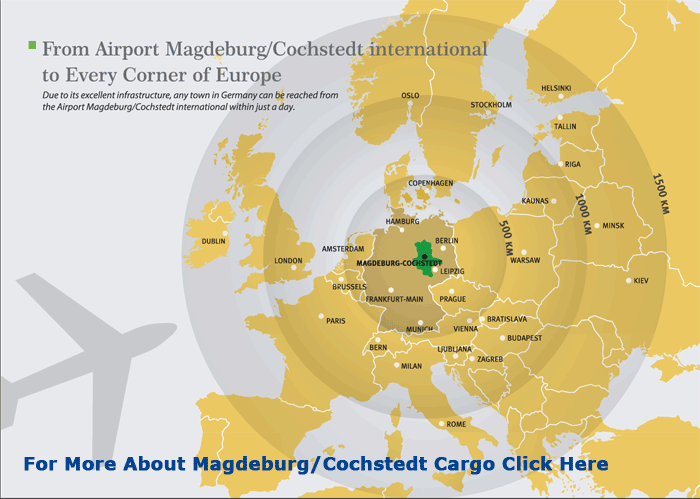 |

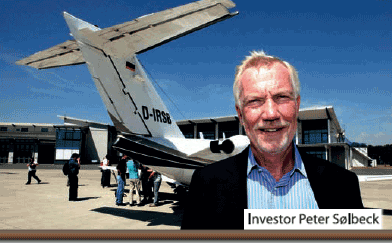 Again,
the town of Magdeburg (which was the sole shareholder of the FMG Corporation
operating the airport and has to absorb its losses) took their chances
and reopened COC, lured by the promise of Ryanair, the European LCC beginning
commercial flights from there (of course, if only the charges were low
enough). Again,
the town of Magdeburg (which was the sole shareholder of the FMG Corporation
operating the airport and has to absorb its losses) took their chances
and reopened COC, lured by the promise of Ryanair, the European LCC beginning
commercial flights from there (of course, if only the charges were low
enough).
But the truth is, without passenger demand at COC, Ryanair passed on the
gateway.
Since the state of Saxony-Anhalt was in
dire financial troubles itself, subsidizing such traffic (as had been
done it the past) was no longer an option, and without a subsidy Ryanair
went elsewhere.
After an attempt by a U.S. investor did
not pan out in 2006, and the same with an investor from Abu Dhabi in 2008
who actually signed papers and bought COC but never paid for it, the airport
premises were sold “as is” to their current owner, Danish
firm Airport Development A/S in March 2010.
A/S, it should be mentioned, currently operates
two other regional (eastern) German airports.
In any case, A/S got the package for 1.
5 million Euro.

In Spring 2011 LCC Ryanair did start service
to a few popular holiday destinations.
Plans to re-name the “Magdeburg/Cochstedt
International Airport” to something grander like “Airport
Berlin- Magdeburg International” were scrapped by the state court
in Berlin in late 2010, because COC would have been the fifth airport
in BER—in addition to existing airports Tegel (TXL), Schoenefeld
(SXF), BER, which was already in construction, and traditional Tempelhof
(THF), which was about to be closed.
The Berlin moniker did not fly after somebody
looked at the map and noted the distance of about 200km (125 mi) did not
really position Magdeburg anywhere near Berlin.
The airline CSO City Fly (which never had
any kind of AOC and operated flights based on chartered aircraft, subsidized
by the airport company) offered a COC-Munich connection from December
2011 until June 2012.
But these flights had to be cancelled, as
well as some Germania flights because of lack of demand.
The much-advertised 2012/2013 winter schedule
flights by Germania at COC are just charters operated on behalf of local
travel agents twice a season.
For COC to be viable even in the passenger
sector would require about 425,000 passengers annually; in fact, only
76,000 actually departed from or arrived at COC in 2012.
Cargo wise, a small number of charters had
been operated and some local firms were attracted because of the newly
erected logistics facility on the airport premises, apparently at cut-rate
charges.
While this is certainly success on a very
small scale, it must be underscored that the Danish proprietors were without
question more successful than the previous stakeholders
This said, the corporate business reports
available to the public indicate COC delivered 1.4 million Euro and 2.6
million Euro debt for 2010 and 2011 respectively, while (projected) 2012
figures are said to exceed 3.5 million Euros.

Ideas to establish COC as a center for air
transport training and excellence, as initially advertised by the operator,
seems to not have materialized; it is both hard to see where the trainees
can be trained, where they would come from, and where such an enterprise
would actually make sense.
Quoting from COC’s logistics facility
inauguration party invitation:
“With guests from the politics, corporate
and media sectors, the big event is now imminent! The 1,000m_ freight
hall with security and screening technology and storage facilities will
be opened!”
And it was opened yesterday.
“Lots Of Luck,” is all we can
say.
Jens
|







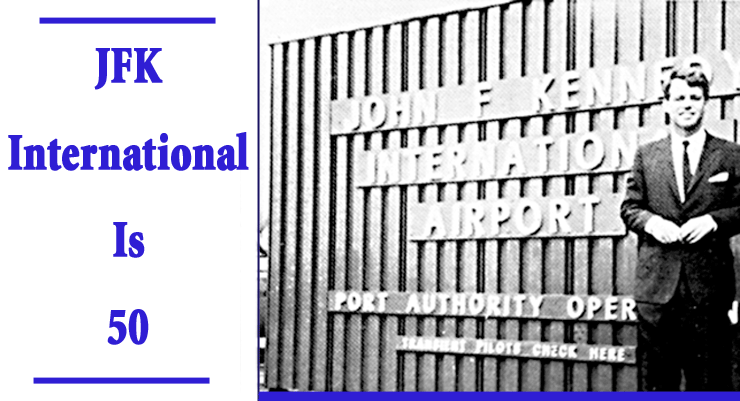

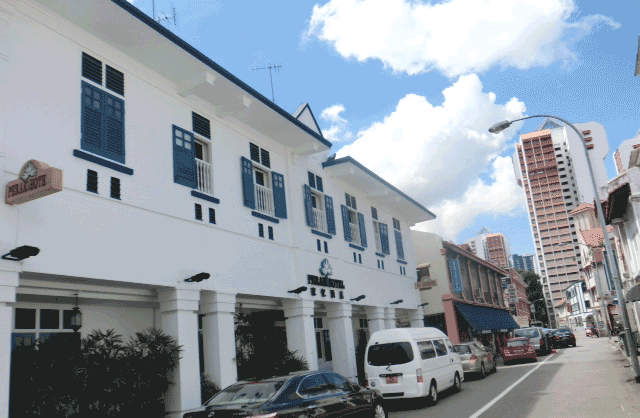
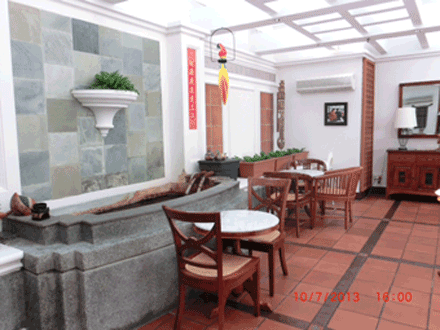 “Because we travelled a fair bit,
we realized that there were very few Bed and Breakfast type hotels in
Singapore. Thus, we decided to go into the hospitality business in 1995
with the B&B concept and to cut out the frills.”
“Because we travelled a fair bit,
we realized that there were very few Bed and Breakfast type hotels in
Singapore. Thus, we decided to go into the hospitality business in 1995
with the B&B concept and to cut out the frills.”